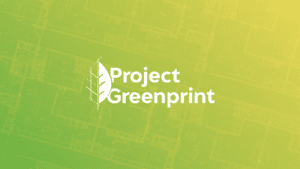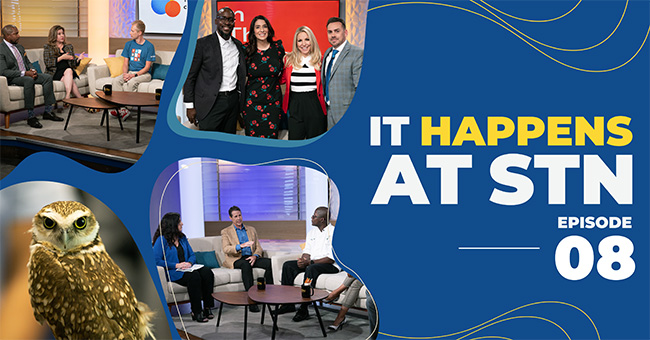It is a difficult question to answer: How do you manage development in a way that allows for constant growth while constantly defending Arizona’s great natural resources?
For May’s Project Greenprint, host Kristen Keogh sits down with Desert Foothills Land Trust President, CEO Vicki Preston, Cofounder of Wild at Heart Bob Fox, and special guest Tawny the burrowing owl, to talk about how partnerships and community involvement help their organizations protect the Sonoran Desert.
They chat about the wonder that is the most biologically diverse desert in the world and the conversations that must be had as continued urban expansion pushes native species out of their natural habitats.
Project Greenprint is part of It Happens at STN, a local news hour dedicated to community growth and actionable solutions.
Each month, innovators share insightful commentary on the latest sustainability initiatives in the Greater Phoenix area.
Watch the Project Greenprint Action Panel
Action Panelists
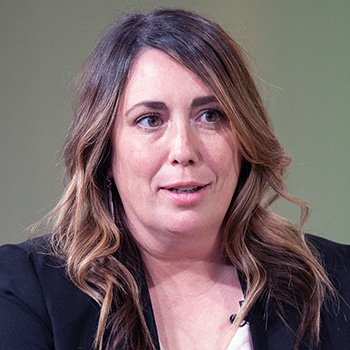
Vicki Preston
- CEO
- Desert Foothills Land Trust
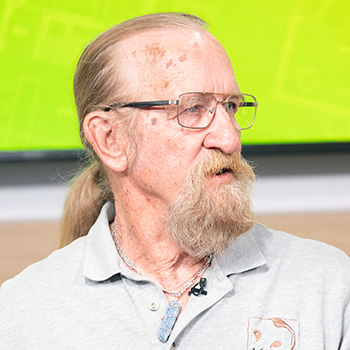
Bob Fox
- Cofounder
- Wild at Heart
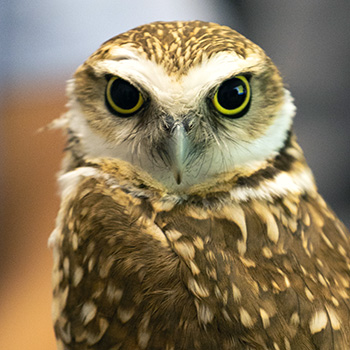
Tawny
- Burrowing Owl
- Sonoran Desert
Action Panelists
Vicki Preston
CEO – Desert Foothills Land Trust
Bob Fox
Cofounder – Wild at Heart
Tawny
Burrowing Owl – Sonoran Desert

Passion Project
I, obviously, share a passion for the desert. Like so many of us that call Arizona home, I’m not from here. We could say it was because I escaped the Ohio winters. The reality is I could find good weather in many places. It really was a desert that got into my soul. I think that’s what it means for so [many] of us. It becomes a part of you. It’s why it’s so important to protect it. It’s the most biologically diverse desert in the world. There is nothing else like it.
Protection Plan
We work at Desert Foothills Land Trust to protect those important places that make the Sonoran desert what it is. We focus on our beautiful, iconic viewsheds, our riparian areas, the areas that are adjacent to our streams and desert washes, which are so critical for our wildlife, wildlife corridors, wildlife habitats and our cultural and historic areas.
Forever Promise
As a land trust, we have a whole toolbox and ways we can protect land. But the two ways we really do it is, one, ownership. Whether the land is bought by us or gifted to us, everything we do is forever. We not only then hold the deed to that property, but we also manage it and steward it forever.
The other tool, which is really unique in working with private landowners, is a conservation easement agreement between the land trust and the landowner to identify the important cultural or historic resources on their property and basically restrict their use. So it remains in private land, in landowner hands, but it is forever. It’s written on the deed. When [the property] is that’s sold, it still goes along with that deed. Whoever owns it, it’s forever.
Support System
It’s no question. Without partnerships, we wouldn’t be able to do this. It’s amazing to think that they’re projecting that the population of Arizona will double by 2050. It’s almost unfathomable. That’s why it’s so critical while we welcome our new neighbors to really focus on smart growth; identifying the critical wildlife habitats and ensuring we stay ahead of those bulldozers and protect them. It would not be possible without partnerships.
Like most nonprofits, we are a tiny organization with a huge mission. Partnerships and working with developers have been really key. In fact, some of our conservation properties were done in conjunction with developers, working with them to identify those critical habitats that need preservation and those that could be developed.
Moving forward, that’s going to be key. It’s focusing on the smart-growth partners, whether it’s developers, our communities, or other nonprofits. It really is just about the awareness.

Rehabbing Raptors
What we do is rehabilitation. That’s our prime goal. Everything that we do at Wild At Heart is for the benefit of the birds of prey that come into our care. That number has skyrocketed over the last number of years. We’re now seeing about 800 raptors come through our center on a yearly basis. A lot of that has to do with habitat loss. A lot of it also has to do with more people are out, more people see it, more people are aware of it, and they really care about their wildlife.
We see the destruction of the desert through construction, we’re converting our farmland, we’re converting our desert into homes, solar array fields, into construction areas. A lot of the habitat is being lost for these wonderful animals.
Rescue Mission
Tawny is a burrowing owl. They are a very unique species in that they live underground. The only owl in the world that does. Because of that, they are at great risk from development. So, Wild At Heart has developed a program over the years that allows us, with permits from US Fish Wildlife Service, to go out and actually rescue them from construction sites. Then we actually build artificial borough systems for them in areas that aren’t going to be developed. It’s a huge program, and we wouldn’t be able to do it without the help and willingness of the development community. They’ve been very positive in making sure that these birds and other wildlife are really taken care of.
It really is interesting because a lot of what we get is comments from people. People love the little burrowing owls. They’re the first ones to contact us. Oftentimes developers will call me even before they buy properties. They go out and survey. Do we have owls there?
Always Available
I work with a couple of different municipalities. They have projects already in place, [and] programs to make sure that these guys were taken care of. When we founded, my wife and I decided we were going to answer our phone 24 hours a day, seven days a week. The reason we do that is phone tag is difficult. If you are a family, [and] you’ve got an injured animal in your care, you’re trying to find help for it, [and] nobody calls you back, or it takes days or hours. We want people to have a sense that someone cares.
Even if it’s something that we can’t deal with, we can always, forward that on to someone else, give them at least some comfort, tell them what to do, how to handle it, so at least they know that their efforts are not in vain.
That all goes back to what people care about. And it’s about animals. People have that innate relationship with wildlife, with animals, and we just need to get more of that. A big part of our program [is] to try and, and create that inclusiveness with individuals and wildlife.


